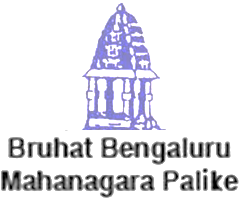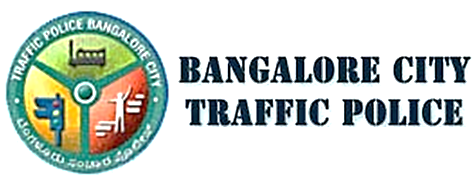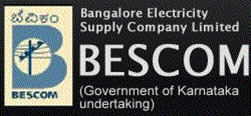HOT TOPICS
SPOTLIGHT AGENCIES
Mono vs LRT vs METRO vs Commuter vs Suburban vs ...
Written By srkulhalli - 18 September, 2008
Bangalore monorail Analysis Rail LRT Commute Metro Rail
This is something I have been dying to understand better. What is the real difference between the various rail based transport systems ? That is, the engineering aspect. Fundamentally arent they all wheels on a track.
Is it just a question of capacity ? Just scaling the strength of the supporting civil infrastructure ? Do we call a higher capacity LRT a METRO ?
I am not talking about grade here. Almost all (exception of Mono) can be made to run at grade (on surface), elevated or underground. Mono too, there is no reason why it cannot be run very close to the ground to be called at grade (well almost)
Any gyan is welcome
Suhas
COMMENTS

silkboard - 23 September, 2008 - 10:45
Seeing that this didn't turn into engineering chat, I return to and argue another point. Lets borrow from the BMTC related surveys (M N Srihari's 'paper') and polls (right here, from Vasanth) that tell us that people want two things first
- reliability, as in predictablity if time. Point A to Point B in a given range of time. Say, Indiranagar to Madivala in 20-30 minutes, that type of range.
- coverage. How far is the nearest point of commute, and can I easily walk or drive up to it?
- comfort, speed etc come a bit later, and enter the debate indirectly, at least for the majority
Suhas, with these two being most important, I will buy your argument that Metro B (whatever it may be - elevated LRT, Railway's DEMU with bird cage like fences, Dedicated bus lanes on elevated roads - design your cost and space affective technology here) would be better option that 120 Cr/km Metro because you want "coverage" over speed.
These talks always tilts in favor of Metro due to speed. Speed is about how fast multiplied by how many. You can do with a high capacity, high speed mode for high density corridors. If the Metro corridors are not dense, you can make them high density by two means:
1) Selectively raise FAR around the Metro corridor
2) Design each Metro station as a hub for catchment area
Which of the two is easier for government to do? Yes, #1, and they have already done it! (Recently raised FAR around Metro corridor to 4)! However, the same high FAR thing is now hurting because its become harder to acquire land near the stations for the purpose of building them up as local transportation hubs (source: a recent chat with those in the know).
One metro station every 1 km may never happen, it probably doesn't deserver to as well. But transportation design for catchment areas for Metro needs to happen, and happen fast.
Its not good to hear that BMTC and BMRC are arguing over who should pay for and maintain (as in acquire) areas for buses to pick up passengers near the station. detailed plans for stations are not public (at least I haven't seen the plans, I am talking the full station area, not just the show peice building, which really doesn't matter). Catchment area, and station sorrounding area design will make or break the Metro.
Now, about catchment, I am with asj's philosophy here. Existing bus system, with some re-tuning to add local shuttles to extend the reach to deeper residential areas can do it. I would like us to exhaust that option before going into Monorail or Skybus or whatever.
But its sad to see no talk happening in public media and forums on this topic. Metro is going to be like BIAL, we will likely be disappointed because we are ot paying attention to details and scrutiny right now.
Sorry for the Metro heavy talk - will probably copy-paste it into a new Metro only thread.
[Suhas - did you read the PM?]

blrsri - 20 September, 2008 - 11:33
wish digging up - place - cover was that easy task..itz very evident from the magic underpasses that we wanted to put in place..remember it was a 3-5 mts width
many things to be taken care of -
high cost
soil quality
water table
existing utility lines etc
LRT like the green line in Boston run at different grades, goes undergorund at Boston college and when its at park street..red line(metro) criss corsses below it..this was layed in the early 19th century!
The best advantage for going underground is, as you mention, nothing is disturbed on top..and speed is not hindered..in that case its more economical for planning a metro rather than a LRT underground!
LRT at grade is a good idea for Bangalore but needs tremendous dicipline from road users (vehicles/pedestrians)..we lack here and I dont see we improving anywhere in the near future..
Metro is the only way to go!

BuckC - 18 September, 2008 - 23:44
BuckC
Why not integrate all of the rail transit plans within the city and design it so that all sections of the city and the suburbs are served by one type of rail system, viz. Metro rail?

blrsri - 19 September, 2008 - 02:07
About laying new tracks and running LRT/monorail/brt, there has been prior discussions on it..
http://praja.in/bangalore/discuss/2008/04/light-rail-transit-lrt
to reiterate..allignment, route, passenger density should play a factor for deciding the mode and not the mode itself.
A retrofit like..
'mono is cool, lets have it from kattariguppe to national college!' or
'they(private cos) are anyways monorail for free, so whats the harm' etc.. is stupid!
LRT on the other hand is ideal but I have come to a conclusion that it is not practical for Bangalore!
regards to commuter rail..there are also many blogs/comments on praja already discussing this..however karnataka is not in good terms with the centre (railways) and they dont have time/resources to cater to local taffic in bangalore...or local anything..benniganahalli!

srkulhalli - 22 September, 2008 - 10:30
PRAJA.IN COMMENT GUIDELINES
Posting Guidelines apply for comments as well. No foul language, hate mongering or personal attacks. If criticizing third person or an authority, you must be fact based, as constructive as possible, and use gentle words. Avoid going off-topic no matter how nice your comment is. Moderators reserve the right to either edit or simply delete comments that don't meet these guidelines. If you are nice enough to realize you violated the guidelines, please save Moderators some time by editing and fixing yourself. Thanks!





